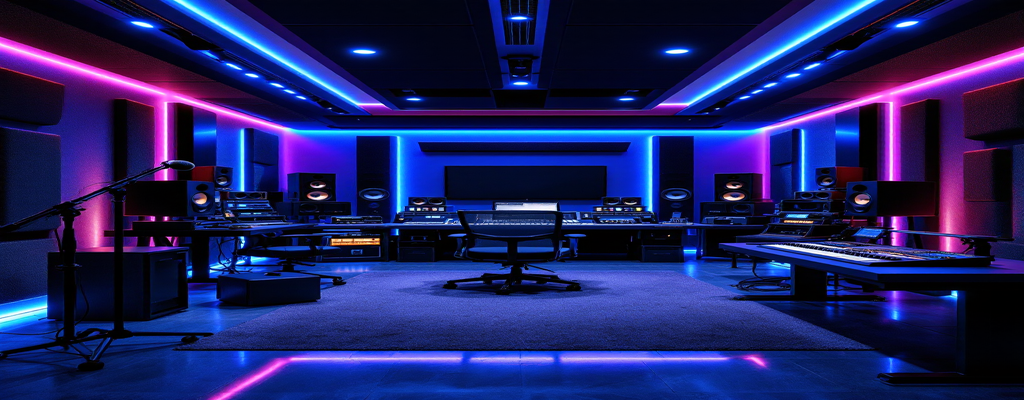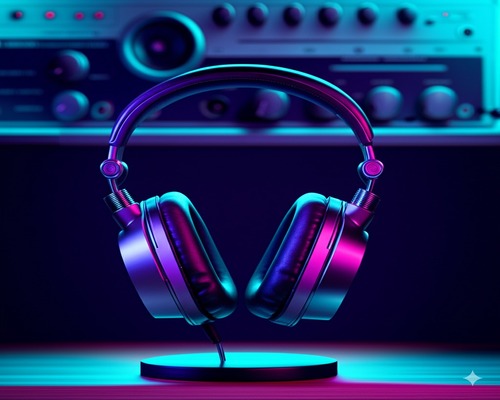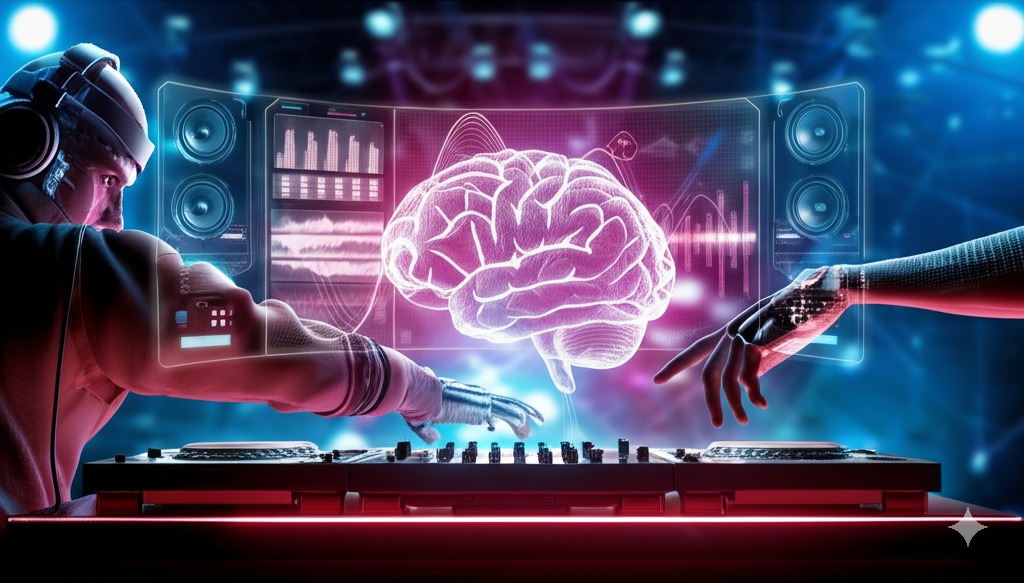
AI in electronic dance music (EDM) is changing the music scene in big ways. New tech is giving artists fresh tools to make music, put on shows, and connect with fans. From smart programs that help write songs to systems that make live shows more exciting, artificial intelligence is making its mark on how electronic music gets made and enjoyed by people around the world.
What is AI in Electronic Dance Music: The Technology Behind the Revolution
AI in electronic dance music is really shifting how DJs and producers work. These smart computer programs use learning systems that study existing songs to help create new music, design sounds, and handle the technical parts of making tracks.
Today’s electronic music AI tools can spot and copy beat patterns, melodies, and even the unique styles of famous artists. They learn from thousands of songs, figuring out what makes house music sound like house or techno sound like techno, then use these lessons to help make new tracks that feel real but still push boundaries.
What makes AI music production cool is that it works both as a helper and a partner. For pros who’ve been making music for years, these tools can break through creative blocks by suggesting new ideas or handling boring technical stuff. For beginners, they make it easier to create good-sounding tracks without spending years learning all the technical skills that usually go into music production.
Neural networks in EDM have gotten really good at seeing how different sounds need to work together to make a track that flows well. Unlike the simple computer programs from years ago, today’s AI-assisted music composition tools understand not just which notes might work well together, but how they should change and build over time to create the energy shifts that make people want to dance.
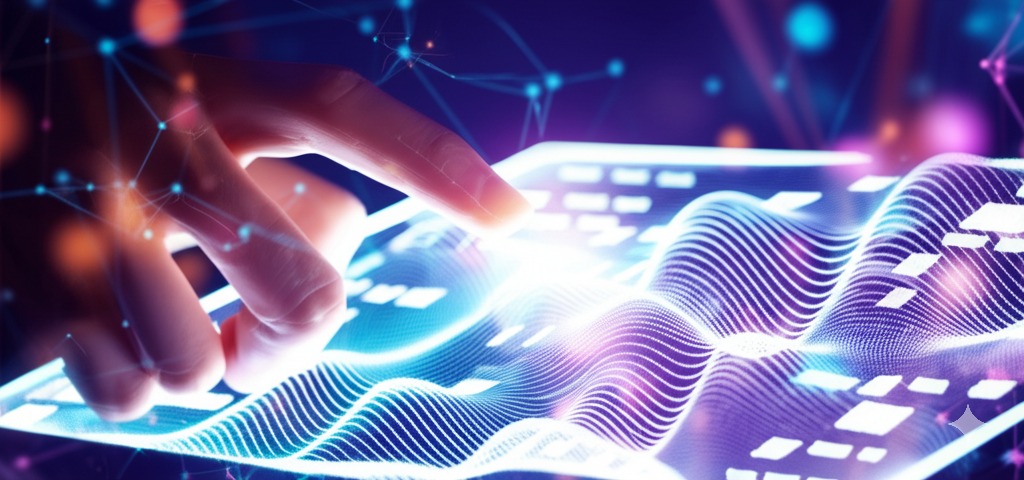
The Evolution of AI in EDM: From Basic Algorithms to Deep Learning
The story of AI in electronic dance music didn’t happen overnight. It started with basic computer programs that could make simple patterns and has grown into smart systems that can create entire songs.
In the early days:
- Simple programs could make basic drum patterns
- You had to do most of the creative work yourself
- The results often sounded mechanical and obvious
Now with deep learning EDM creation:
- AI can study thousands of songs to learn what sounds good
- Programs can suggest melodies, beats, and sounds that fit your style
- The impact of AI in music is more natural and creative
This growth in AI-generated EDM tracks vs human producers has some people worried about the future of human DJs, but most see it as a partnership rather than a replacement.
AI-Powered Music Composition Tools for EDM Producers
If you’re making electronic dance music today, there are some amazing AI tools for musicians that can help with writing tracks. These aren’t just simple beat makers – they’re smart programs that can help with everything from coming up with catchy melodies to suggesting complete song structures.
Some popular tools include:
- AIVA – can create entire music pieces in different EDM styles
- Amadeus Code – makes melody suggestions based on hit songs
- Orb Producer – helps build complete tracks from scratch
Use case: AIVA (Artificial Intelligence Virtual Artist) – https://www.aiva.ai/
The way these electronic music production AI tools work is pretty cool. You can give them some guidelines like “make a house track at 128 BPM” or “create something that sounds like early Daft Punk,” and they’ll come up with ideas based on their learning from thousands of songs.
You can find more examples of these tools and how they’re being used in different music styles at AI music by genre.
Automated Mixing and Mastering with AI: Getting Pro Sound Quality
One of the hardest parts of making electronic music has always been getting that final polish that makes tracks sound professional. This is where AI mixing and mastering tools are making a huge difference for bedroom producers and pros alike.
These smart tools can:
- Balance all the sounds in your track so nothing’s too loud or too quiet
- Add the right amount of effects like reverb and delay
- Make sure your bass hits hard without overwhelming the mix
- Give your track that commercial shine that used to require expensive studios
Use case: iZotope Neutron – https://www.izotope.com/en/products/neutron.html
Programs like iZotope’s Neutron and Ozone use artificial intelligence electronic dance music processing to analyze your track and compare it to thousands of professionally mixed songs. They can then suggest changes or even make them automatically to get your sound closer to the pros.
AI Sound Design and Synthesis: Making Unique EDM Sounds
Creating unique sounds has always been what sets great electronic music producers apart. Now, AI in electronic dance music is helping artists make completely new sounds that have never been heard before.
These AI sound designers work by:
- Combining elements from different instrument types
- Creating new synthesizer settings that would take humans hours to program
- Suggesting unusual processing chains that create distinctive timbres
- Learning what kinds of sounds fit specific EDM subgenres
Use case: LANDR’s AI-powered sound generator – https://www.landr.com/
Tools like LANDR’s sound generator are using neural networks in EDM to create sounds that wouldn’t be possible with traditional synthesis methods. They study the mathematical properties of existing sounds and can blend or extend them in new directions.
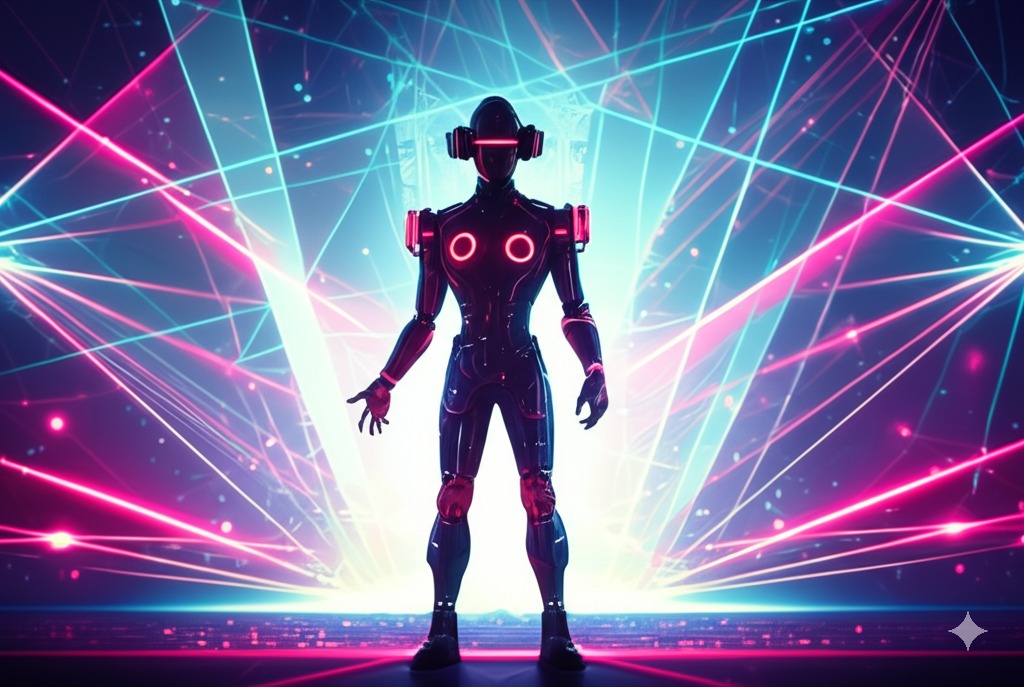
Vocal Processing and Generation with AI: New Ways to Use Voice
Voice has always been a powerful element in electronic dance music, from sampled diva hooks to vocoded robotic phrases. Now AI in EDM is transforming how producers work with vocals in exciting new ways.
Today’s AI vocal tools can:
- Generate completely artificial singing that sounds human
- Transform a male voice to female or vice versa
- Create vocal harmonies from a single recorded take
- Make believable vocal samples without needing a singer
Use case: Suno AI – https://www.suno.ai/
Services like Suno AI show how far artificial intelligence electronic dance music vocal technology has come. These systems can create complete vocal lines from text prompts, matching the style and emotion you need for your track.
Top AI-Based DAWs and Plugins Changing EDM Production in 2025
The tools producers use to make electronic music are getting smarter every day. Digital Audio Workstations (DAWs) and plugins now include AI in electronic dance music features that make production faster and more creative.
Some standout tools in 2025 include:
- Ableton Live with AI Assistant – suggests next steps based on your production style
- FL Studio AI Edition – includes automated arranging and mixing
- Logic Pro Neural Mixer – uses AI to create perfect balances between tracks
- BandLab’s AI Band – creates backing tracks that follow your lead
For producers looking to stay current with the latest tools, check out reviews of the newest AI music production software on the market and discover how to use AI to create electronic dance music.
AI-Generated EDM Genres: Brand New Kinds of Electronic Music
One of the most exciting developments with AI in electronic dance music is the creation of entirely new subgenres that probably wouldn’t exist without artificial intelligence.
These new AI-influenced genres include:
- Neural House – blends traditional house elements with unpredictable AI-generated variations
- Quantum Techno – uses AI to create impossibly complex rhythm patterns
- Data Drop – features bass sounds created entirely by AI synthesis
- Algorithmic Trance – employs AI to create emotional progressions that human composers might not discover
Use case: Holly+ by Holly Herndon – https://holly.plus/
Projects like Holly Herndon’s Holly+ demonstrate how AI-generated EDM tracks vs human producers can create new artistic directions. Rather than simply mimicking existing styles, these projects use AI as a tool to explore genuinely new territory.
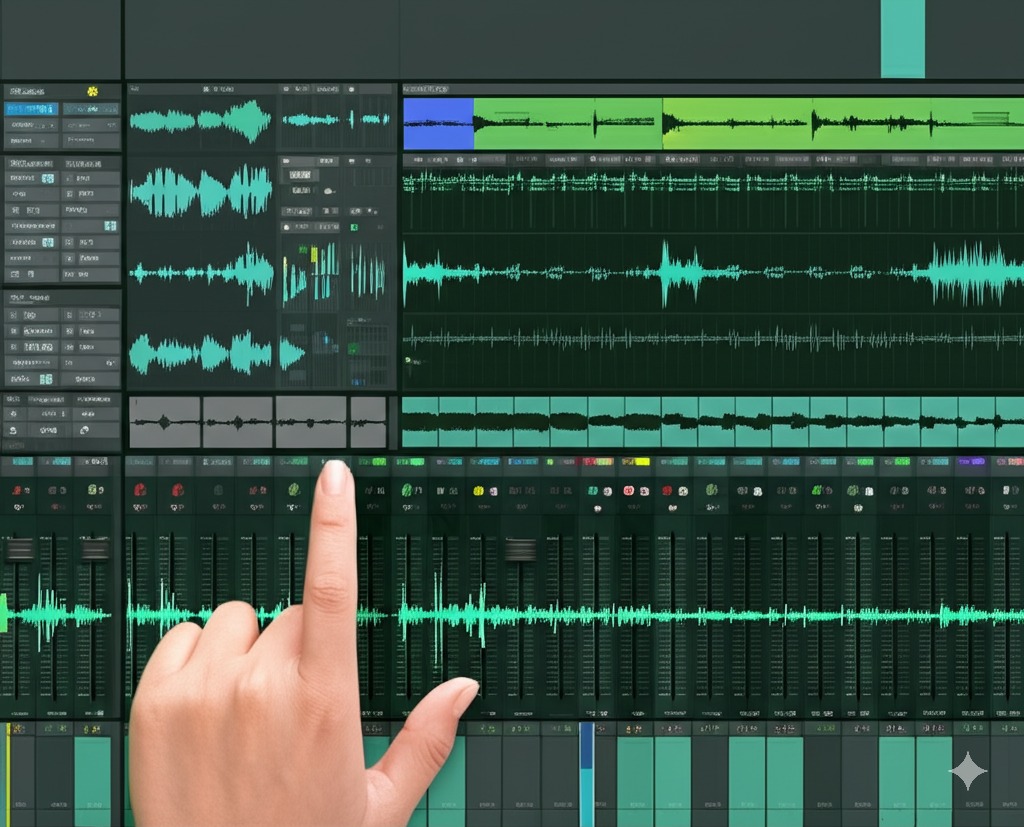
Real-time AI Systems Enhancing Live EDM Performances
Live shows are being transformed by AI in electronic dance music technology that can react to the crowd and adapt performances in real time.
These smart performance systems can:
- Analyze the energy level of the crowd through cameras
- Adjust music elements like tempo and intensity based on audience reaction
- Coordinate lighting and visuals to match musical changes
- Help DJs make better decisions about what to play next
Use case: Cercle’s AI-enhanced live performances – https://cercle.io/
Companies like Cercle are pioneering AI DJ tools that help create more responsive and engaging live experiences. These systems don’t replace the human performer but give them new capabilities to read and respond to their audience.
The technology behind how artificial intelligence is changing DJ performances goes beyond simple beat-matching or auto-mixing. Modern systems can recognize emotional responses in crowds and predict how specific tracks might affect the energy level.
Human-AI Collaboration in EDM Festival Performances: The New Way to Play
The relationship between DJs and technology has reached a new level with AI in electronic dance music creating true collaborative performances between human artists and artificial intelligence.
This new performance style includes:
- DJs improvising alongside AI systems that respond to their choices
- AI suggesting transitions or tracks based on crowd response
- Systems that can generate new musical elements on the fly
- Shared control of the musical journey between human and machine
Use case: Richie Hawtin’s CLOSE concept – https://richiehawtin.com/
Artists like Richie Hawtin are pioneering this approach with concepts like CLOSE, which uses AI DJ tools to extend what’s possible in a live electronic music performance.
Predictive Analytics in EDM: Forecasting Trends and Hit Potential with AI
The crystal ball of the music industry is increasingly powered by AI in electronic dance music. These systems can analyze massive amounts of data to predict emerging trends and assess the commercial potential of tracks before they’re released.
Modern predictive AI can:
- Identify sound elements that are growing in popularity
- Spot emerging micro-genres before they go mainstream
- Estimate a track’s streaming potential based on its characteristics
- Suggest modifications that might increase commercial appeal
Use case: Spotify’s predictive algorithms – https://research.atspotify.com/
Major platforms like Spotify use these electronic music AI tools to decide which tracks to feature on influential playlists, while labels use similar technology to guide their signing decisions.
For independent artists, access to these algorithmic EDM production insights can help inform creative decisions without necessarily dictating them. Knowing that a particular sound or structure is gaining popularity might influence how you develop or release your music.
Copyright Challenges with AI-Generated EDM: Who Owns What?
The legal landscape around AI in electronic dance music is still catching up to the technology, creating complex questions about ownership, rights, and royalties.
Key copyright issues include:
- Who owns music created by AI trained on copyrighted works?
- How similar can an AI composition be to its training material?
- Can you copyright AI-generated music at all?
- How are royalties split between humans and platforms?
Many electronic music AI tools learn by analyzing thousands of existing tracks, raising questions about whether their output constitutes a derivative work of that training material.
Different platforms take various approaches to these issues. Some specify that users own all rights to what they create using the tool, while others maintain certain rights or require credit for the AI system in official releases.
The Future of AI in Electronic Dance Music
As we look at the future of artificial intelligence in electronic music, it’s clear that AI isn’t just a passing trend but a big shift in how electronic music gets made and enjoyed.
The best AI tools for EDM producers in 2025 will keep getting better, becoming easier to use and smarter about different music styles. We’ll probably see more tools that focus on specific jobs, from making drum beats to arranging songs to making them sound professional.
People will still debate whether AI-made music is “real art” or not, but as these tools become normal, most folks will care more about how artists use AI in cool and creative ways rather than whether they use it at all.
One thing seems pretty certain: the DJs and producers who do best will be the ones who learn to work with machine learning music production systems as partners rather than just tools. They’ll find that sweet spot where human creativity and artificial intelligence work together to make music that breaks new ground.
For anyone who loves making electronic music, this is an exciting time to explore what automated music arrangement and other AI tech can do. It’s never been easier to make good-sounding music, which means new people with fresh ideas can jump in and make their mark on electronic dance music.
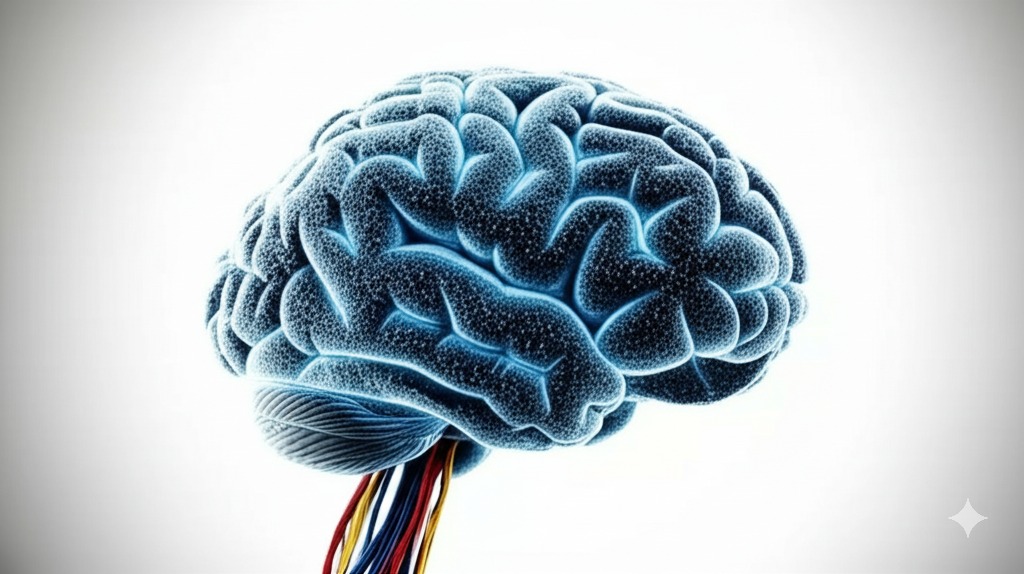
Frequently Asked Questions About AI in EDM
Can AI completely replace human EDM producers?
Not really. While AI in electronic dance music can do a lot now, it still needs humans to guide it and make the big creative decisions. AI is more like a super-smart assistant than a replacement. It can suggest ideas and handle technical stuff, but the vision, emotion, and connection to culture still comes from human artists. Most successful music is a team effort between people and AI tools.
How do AI-generated EDM tracks perform compared to human-created music?
In blind tests, many people can’t tell the difference between AI-generated EDM tracks vs human producers anymore. Some AI tracks do really well on streaming platforms, especially for background music and functional playlists. But human-created tracks still tend to connect more emotionally with fans and work better in live settings. The best results usually come from human artists using AI as part of their process rather than pure AI-only tracks.
What skills do electronic music producers need to effectively use AI tools?
You don’t need to be a tech genius to use electronic music AI tools. Basic computer skills and some music knowledge will get you started. The most important skills are actually creative ones – knowing what sounds good, understanding song structure, and having a clear idea of what you want to create. Technical skills with your DAW help too, but many AI tools are designed to be user-friendly. Being open to experimenting and trying new workflows is probably the most valuable skill.
Are there copyright concerns when using AI to generate EDM tracks?
Yes, this is a tricky area. Most AI music production tools learn by studying existing music, which raises questions about copyright. Some platforms clearly state that you own everything you create with their tools, while others might claim certain rights. It’s important to read the terms of service before releasing AI-assisted music. The safest approach is using tools that let you keep full rights to your output and avoiding ones that directly copy recognizable parts of famous tracks.
How expensive are professional-grade AI tools for electronic music production?
The price range is huge. Some great AI tools for musicians are completely free or have free versions, while others cost anywhere from $10 to $100 per month for subscriptions. The most expensive professional systems might cost several hundred dollars, but these are mainly aimed at studios and labels. For most independent producers, there are plenty of affordable options that still give professional results. Many tools also offer pay-as-you-go options where you only pay for the tracks you want to keep.
Can AI help beginners create professional-sounding EDM tracks?
Absolutely! This is one of the biggest benefits of AI in EDM. Beginners can use AI to handle the technical aspects they haven’t mastered yet, like complex sound design or proper mixing and mastering. AI can suggest chord progressions, create drum patterns, and help with arrangement – all things that usually take years to learn. This lets newcomers focus on the creative side while still creating tracks that sound polished. It’s like having an experienced producer sitting next to you giving advice.
Will AI lead to greater homogeneity in electronic dance music?
It could if everyone uses the same tools in the same ways. If producers just accept AI suggestions without adding their own ideas, music might start sounding similar. But so far, algorithmic EDM production seems to be increasing variety instead. People are using AI to explore weird combinations and sounds they wouldn’t have tried on their own. The key is using AI as a starting point or creative spark, then adding your own unique touches and perspectives to stand out.
How do listeners react to knowing a track was partially or fully AI-generated?
It depends on the listener. Younger fans often don’t care much about how artificial intelligence is changing DJ performances – they just want music that sounds good. Some music fans are excited about the tech and find it interesting. Others, especially some long-time electronic music fans, might be more skeptical and value the human touch. Most producers find it works best to be transparent but not make a big deal about it – mention AI was part of the process without defining your music entirely by the technology used.
What EDM genres are most suitable for AI production techniques?
AI in electronic dance music works well across most EDM genres, but some are especially good fits. Genres with clear patterns and structures like house, techno, and trance work great with AI. Genres that need precise, technical production like drum and bass or dubstep also benefit from AI tools. More experimental genres can use AI to find unusual sounds and combinations. Pop-leaning EDM often uses AI for polished vocals and catchy melodies. Really, there’s no genre where AI can’t help in some way.
How can DJs incorporate AI into live performances while maintaining authenticity?
The best approach is using AI DJ tools to handle technical tasks while keeping creative control. Many DJs use AI for beat-matching, track suggestions, or automatic mixing of certain sections, which frees them to focus on reading the crowd and creating a journey. Some use AI to generate custom edits or transitions between tracks before their sets. Others use live reactive visuals powered by AI. The key to authenticity is making the big decisions yourself – what energy to bring, when to change the mood, and how to connect with that specific audience in that moment.
